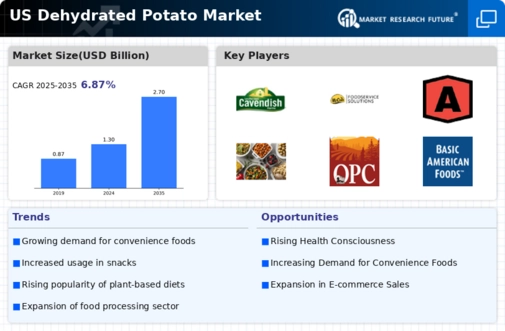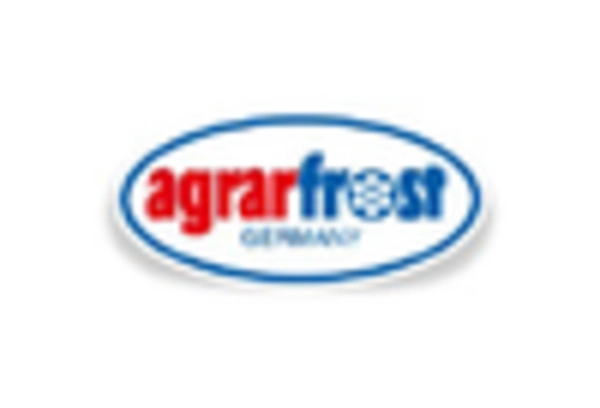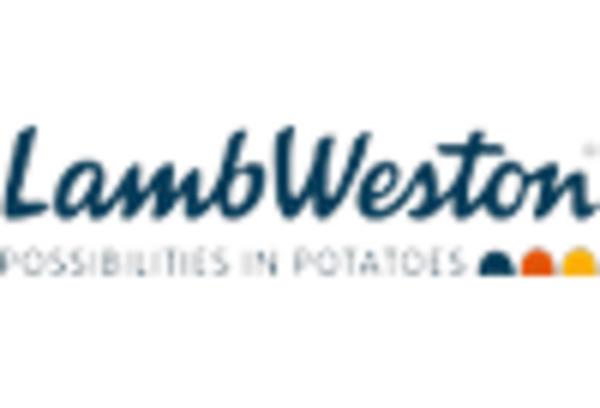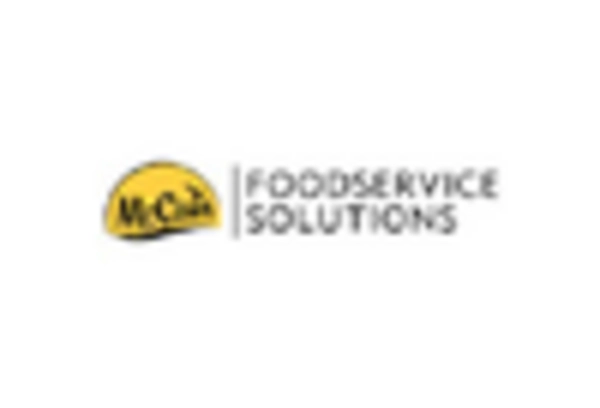Increased Snack Food Consumption
The dehydrated potato market experiences growth due to the rising consumption of snack foods in the US. As consumers increasingly seek convenient and portable snack options, dehydrated potato products, such as chips and crisps, become more appealing. The market for snack foods is projected to reach approximately $100 billion by 2026, indicating a robust demand for dehydrated potato snacks. This trend is further fueled by the busy lifestyles of consumers, who prefer quick and easy meal solutions. The dehydrated potato market is well-positioned to capitalize on this trend, as these products offer a longer shelf life and ease of preparation, making them ideal for on-the-go consumption. Additionally, the versatility of dehydrated potatoes allows for various flavor profiles, catering to diverse consumer preferences.
Rising Popularity of Home Cooking
The rising popularity of home cooking in the US has a notable impact on the dehydrated potato market. As consumers increasingly engage in cooking at home, they seek convenient ingredients that simplify meal preparation. Dehydrated potatoes offer a practical solution, as they require minimal preparation and can be easily rehydrated for various recipes. This trend is supported by a growing interest in culinary experimentation, with consumers looking to recreate restaurant-quality meals at home. The dehydrated potato market stands to benefit from this shift, as these products provide a cost-effective alternative to fresh potatoes while maintaining nutritional value. Furthermore, the ability to store dehydrated potatoes for extended periods aligns with the preferences of home cooks who prioritize pantry staples.
Expansion of Food Processing Sector
The expansion of the food processing sector in the US plays a crucial role in driving the dehydrated potato market. As food manufacturers increasingly seek to enhance product offerings and improve shelf stability, dehydrated potatoes become a valuable ingredient. The food processing industry is projected to grow at a CAGR of approximately 3% from 2025 to 2030, indicating a steady demand for dehydrated potato products. This growth is likely to be fueled by the need for cost-effective and efficient food solutions. The dehydrated potato market benefits from this trend, as processed foods often require ingredients that are easy to store and prepare. Additionally, the versatility of dehydrated potatoes allows for their incorporation into various processed food items, from soups to ready-to-eat meals.
Growing Interest in Plant-Based Diets
The increasing interest in plant-based diets significantly impacts the dehydrated potato market. As more consumers adopt vegetarian and vegan lifestyles, the demand for plant-based food options rises. Dehydrated potatoes serve as an excellent source of carbohydrates and can be incorporated into various dishes, appealing to health-conscious consumers. The plant-based food market is expected to grow at a CAGR of around 11% through 2027, suggesting a favorable environment for the dehydrated potato market. This shift towards plant-based eating habits encourages manufacturers to innovate and create new dehydrated potato products that align with consumer preferences. Furthermore, the nutritional benefits of dehydrated potatoes, such as high fiber content and essential vitamins, enhance their appeal in the context of a plant-based diet.
Technological Advancements in Dehydration Processes
Technological advancements in dehydration processes are transforming the dehydrated potato market. Innovations in drying techniques, such as freeze-drying and vacuum dehydration, enhance the quality and nutritional retention of dehydrated potatoes. These advancements allow manufacturers to produce higher-quality products that appeal to health-conscious consumers. The dehydrated potato market is likely to see increased competition as companies adopt these technologies to differentiate their offerings. Moreover, improved dehydration methods can lead to reduced production costs, making it feasible for manufacturers to offer dehydrated potato products at competitive prices. As consumers become more discerning about food quality, the emphasis on advanced dehydration techniques may drive growth in the market, fostering a trend towards premium dehydrated potato products.

















Leave a Comment